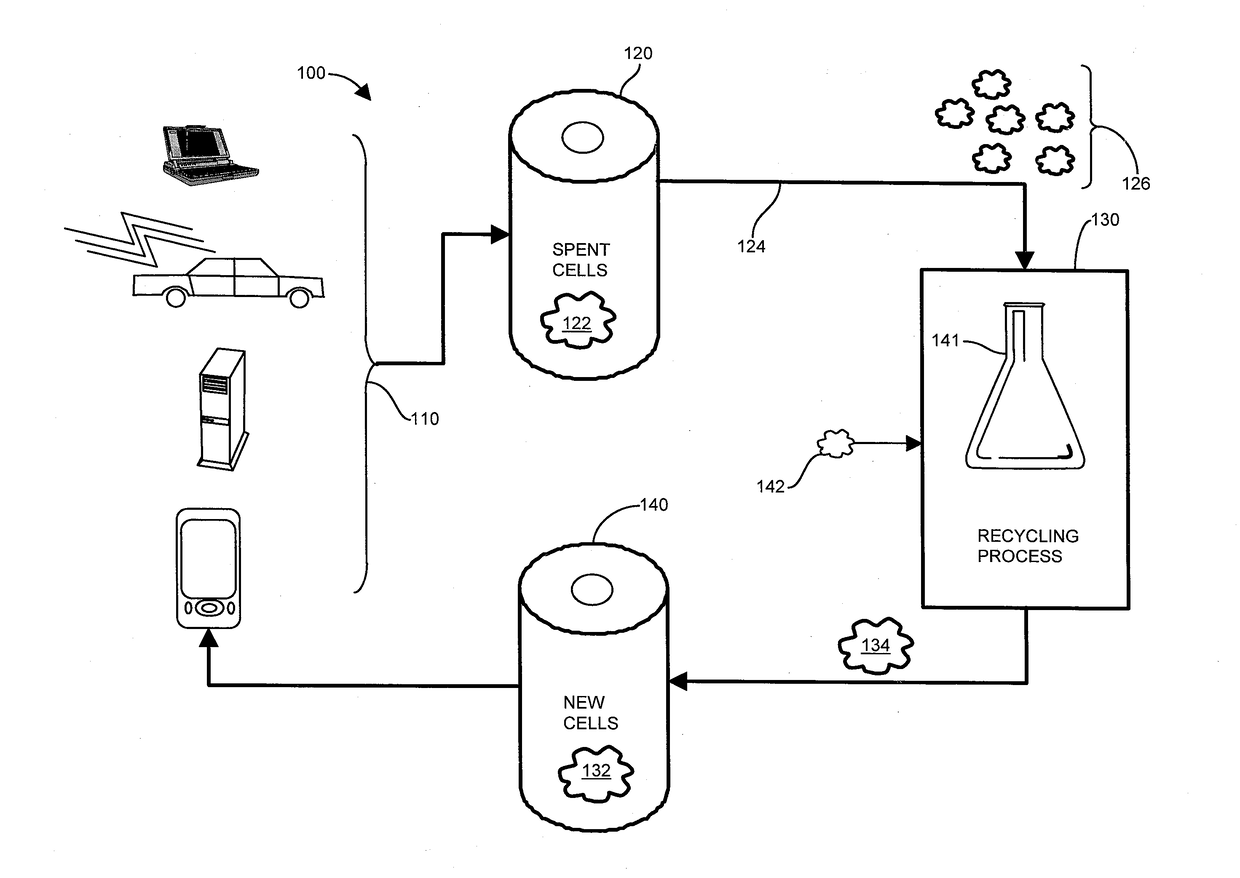Method and apparatus for recycling lithium-ion batteries
a lithium-ion battery and recycling technology, applied in the direction of batteries, nickel compounds, cell components, etc., can solve the problems of large environmental impact and cost of mining, and achieve the effects of reducing waste volume, avoiding high heat, and reducing the required lithium amoun
- Summary
- Abstract
- Description
- Claims
- Application Information
AI Technical Summary
Benefits of technology
Problems solved by technology
Method used
Image
Examples
Embodiment Construction
[0026]Depicted below is an example method and apparatus for recycling batteries such as lithium ion batteries. The proposed approach is an example and is applicable to other lithium and non-lithium batteries for recycling spent batteries and recovering active cathode material suitable for use in new batteries. FIG. 1 is a context diagram of a battery recycling environment 100 suitable for use with configurations herein. Referring to FIG. 1, in the battery recycling environment 100, electronic devices 110 such as laptops, automobiles (hybrid and pure electric), computers, smartphones, and any other type of battery supported equipment is suitable for use with the disclosed approach. The electronic devices contribute spent cells 120, having exhausted cathode material 122 that nonetheless includes the raw materials responsive to the recycling approach discussed herein. A physical separation process 124 dismantles the battery to form a granular mass 126 of the exhausted battery material ...
PUM
| Property | Measurement | Unit |
|---|---|---|
| Temperature | aaaaa | aaaaa |
| Molar density | aaaaa | aaaaa |
| Molar density | aaaaa | aaaaa |
Abstract
Description
Claims
Application Information
 Login to View More
Login to View More - R&D
- Intellectual Property
- Life Sciences
- Materials
- Tech Scout
- Unparalleled Data Quality
- Higher Quality Content
- 60% Fewer Hallucinations
Browse by: Latest US Patents, China's latest patents, Technical Efficacy Thesaurus, Application Domain, Technology Topic, Popular Technical Reports.
© 2025 PatSnap. All rights reserved.Legal|Privacy policy|Modern Slavery Act Transparency Statement|Sitemap|About US| Contact US: help@patsnap.com



